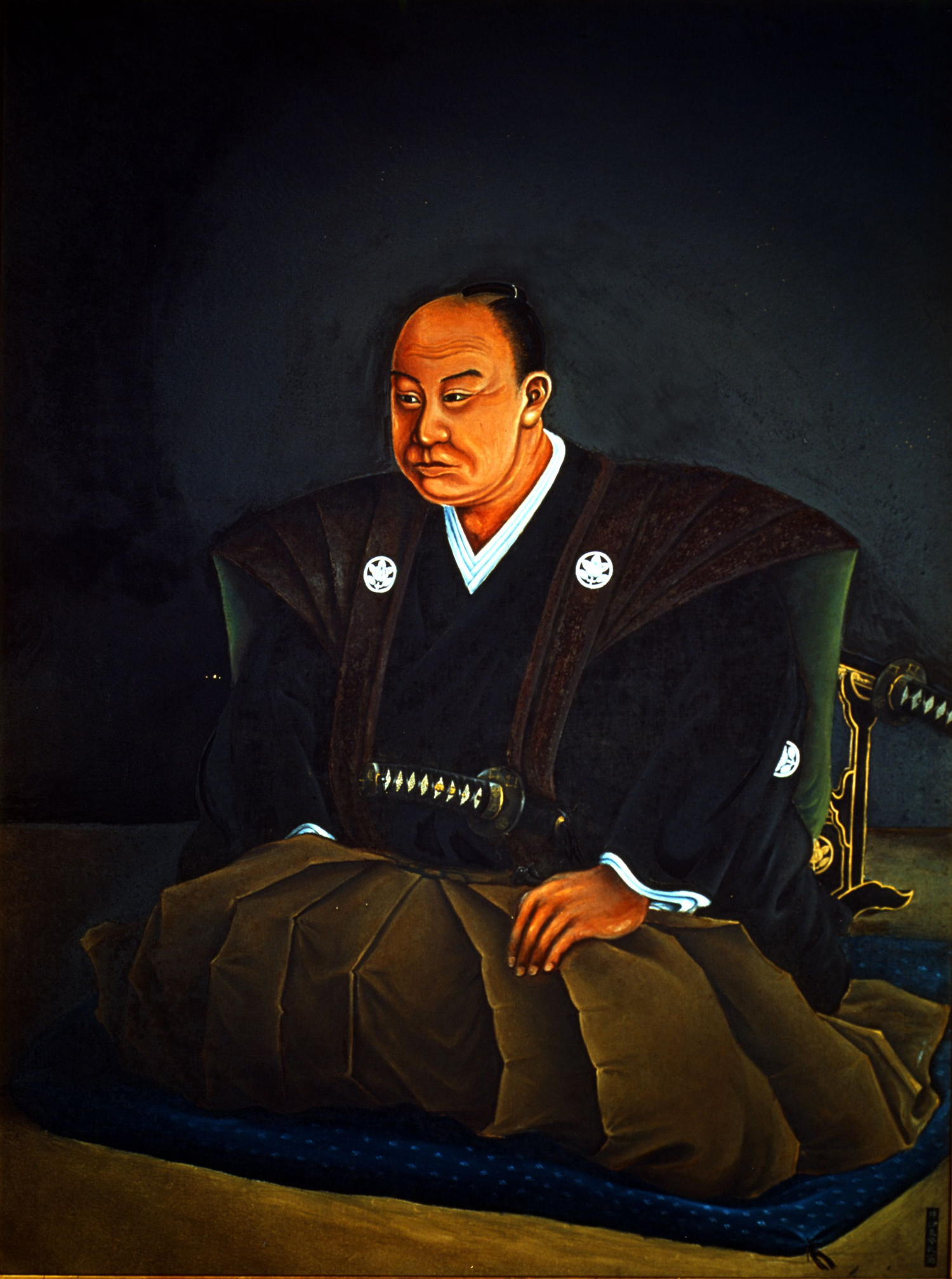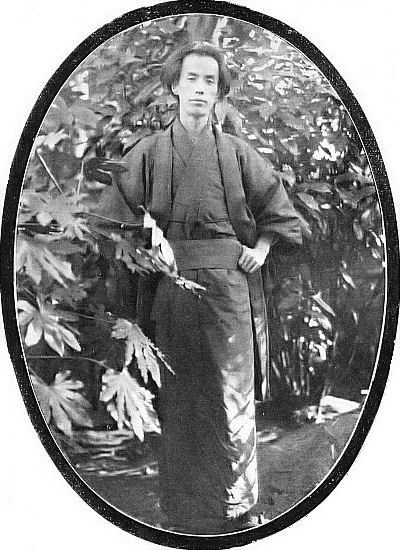|
Funahashi Seiichi
was a Japanese writer of short stories, novellas, novels and stage plays, active in the Shōwa period. Biography Funahashi was born in what is now part of Sumida, Tokyo, where his father was an assistant professor of engineering at Tokyo Imperial University. He had one sister and three younger brothers. As an infant, he suffered from pertussis, which developed into chronic asthma. When his father was transferred to Germany for further studies, Funahashi was entrusted to the care of his grandmother in the Koshigoe neighborhood of Kamakura, Kanagawa, where he spend most of his youth. He attended Tokyo Imperial University’s School of Arts and Sciences, where he joined literature and drama clubs. His literary coterie included Tomoyoshi Murayama, Tomoji Abe, Ujaku Akita, Masuji Ibuse, Motojirō Kajii and Shigeru Tonomura, and his early works and activities with the ''Shingeki'' movement drew the attention of Hidemi Kon and Hideo Kobayashi. His first novel ''Daibingu'' ("Diving") ... [...More Info...] [...Related Items...] OR: [Wikipedia] [Google] [Baidu] |
:Template:Infobox Writer/doc
Infobox writer may be used to summarize information about a person who is a writer/author (includes screenwriters). If the writer-specific fields here are not needed, consider using the more general ; other infoboxes there can be found in :People and person infobox templates. This template may also be used as a module (or sub-template) of ; see WikiProject Infoboxes/embed for guidance on such usage. Syntax The infobox may be added by pasting the template as shown below into an article. All fields are optional. Any unused parameter names can be left blank or omitted. Parameters Please remove any parameters from an article's infobox that are unlikely to be used. All parameters are optional. Unless otherwise specified, if a parameter has multiple values, they should be comma-separated using the template: : which produces: : , language= If any of the individual values contain commas already, add to use semi-colons as separators: : which produces: : , ps ... [...More Info...] [...Related Items...] OR: [Wikipedia] [Google] [Baidu] |
Hideo Kobayashi
was a Japanese author, who established literary criticism as an independent art form in Japan. Early life Kobayashi was born in the Kanda district of Tokyo, where his father was a noted engineer who introduced European diamond polishing technology to Japan, and who invented a ruby-based phonograph needle. Kobayashi studied French literature at Tokyo Imperial University, where his classmates included Hidemi Kon and Tatsuji Miyoshi. He met Chūya Nakahara in April 1925, with whom he quickly became close friends, but in November of the same year, began living together with Nakahara's former mistress, the actress Yasuko Hasegawa. Kobayashi graduated in March 1928, and soon after moved to Osaka for a few months before moving to Nara, where he stayed at the home of Naoya Shiga from May 1928. His relationship with Yasuko Hasegawa ended around this time. In September 1929, he submitted an article to a contest hed by the literary journal ''Kaizō,'' and won second place. Literary crit ... [...More Info...] [...Related Items...] OR: [Wikipedia] [Google] [Baidu] |
Ii Naosuke
was ''daimyō'' of Hikone (1850–1860) and also Tairō of the Tokugawa shogunate, Japan, a position he held from April 23, 1858, until his death, assassinated in the Sakuradamon Incident on March 24, 1860. He is most famous for signing the Harris Treaty with the United States, granting access to ports for trade to American merchants and seamen and extraterritoriality to American citizens. He was also an enthusiastic and accomplished practitioner of the Japanese tea ceremony, in the Sekishūryū style, and his writings include at least two works on the tea ceremony. Under Ii Naosuke’s guidance, the Tokugawa shogunate navigated past a particularly difficult conflict over the succession to the ailing and childless Tokugawa Iesada. Ii Naosuke managed to coerce the Tokugawa shogunate to the last brief resurgence of its power and position in Japanese society before the start of the Meiji period. Ii was assassinated in the Sakuradamon incident by a group of 17 Mito and 1 Satsuma ... [...More Info...] [...Related Items...] OR: [Wikipedia] [Google] [Baidu] |
Bakumatsu Period
was the final years of the Edo period when the Tokugawa shogunate ended. Between 1853 and 1867, Japan ended its isolationist foreign policy known as and changed from a feudal Tokugawa shogunate to the modern empire of the Meiji government. The major ideological-political divide during this period was between the pro-imperial nationalists called and the shogunate forces, which included the elite swordsmen. Although these two groups were the most visible powers, many other factions attempted to use the chaos of to seize personal power.Hillsborough, ''page # needed'' Furthermore, there were two other main driving forces for dissent: first, growing resentment on the part of the (or outside lords), and second, growing anti-Western sentiment following the arrival of Matthew C. Perry. The first related to those lords whose predecessors had fought against Tokugawa forces at the Battle of Sekigahara in 1600, after which they had been permanently excluded from all powerfu ... [...More Info...] [...Related Items...] OR: [Wikipedia] [Google] [Baidu] |
Akutagawa Prize
The is a Japanese literary award presented biannually. Because of its prestige and the considerable attention the winner receives from the media, it is, along with the Naoki Prize, one of Japan's most sought after literary prizes. History The Akutagawa Prize was established in 1935 by Kan Kikuchi, then-editor of ''Bungeishunjū'' magazine, in memory of author Ryūnosuke Akutagawa. It is currently sponsored by the Society for the Promotion of Japanese Literature, and is awarded in January and July to the best serious literary story published in a newspaper or magazine by a new or rising author. The winner receives a pocket watch and a cash award of 1 million yen. The judges usually include contemporary writers, literary critics, and former winners of the prize. Occasionally, when consensus cannot be reached between judges over disputes about the winning story or the quality of work for that half year, no prize is awarded. From 1945 through 1948 no prizes were awarded due to po ... [...More Info...] [...Related Items...] OR: [Wikipedia] [Google] [Baidu] |
Meiji University
, abbreviated as Meiji (明治) or Meidai (明大'')'', is a private research university located in Chiyoda City, the heart of Tokyo, Japan. Established in 1881 as Meiji Law School (明治法律学校, ''Meiji Hōritsu Gakkō'') by three Meiji-era lawyers, Kishimoto Tatsuo, Miyagi Kōzō, and Yashiro Misao, Meiji University is one of the oldest and most prestigious institutions of higher learning in Japan. The university has a total of approximately 33,000 students on all four campuses around the Greater Tokyo Area: Surugadai, Izumi, Ikuta, and Nakano. Meiji is organized into 10 undergraduate, 12 graduate, 4 professional graduate schools; and operates 15 world-class research centers and a museum. It began its first partner agreement in 1986 with York University in Canada, and currently partners with 363 universities and institutions in 56 countries. Some of the university's partners include: Stanford University, Columbia University, the University of Oxford, the University of Ca ... [...More Info...] [...Related Items...] OR: [Wikipedia] [Google] [Baidu] |
Takushoku University
Takushoku University (拓殖 大学; ''Takushoku Daigaku'', abbreviated as 拓大 ''Takudai'') is a private university in Tokyo, Japan. It was founded in 1900 by Duke Taro Katsura (1848–1913).Takushoku University: Home (''c.'' 2009). Retrieved on March 3, 2010. It has two campuses: the main campus in the Bunkyō Ward and a satellite campus in . Takushoku University has five faculties: Commerce, Political Science and Economics, Foreign Languages, International Studies, and Engineering. Takushoku University is a leading university of security studies in Japan. [...More Info...] [...Related Items...] OR: [Wikipedia] [Google] [Baidu] |
Popular Front
A popular front is "any coalition of working-class and middle-class parties", including liberal and social democratic ones, "united for the defense of democratic forms" against "a presumed Fascist assault". More generally, it is "a coalition especially of leftist political parties against a common opponent". The term was first used in the mid-1930s in Europe by communists concerned over the ascent of the ideology of Fascism in Italy and Germany which they sought to combat by coalescing with non-communist political groupings they had previously attacked as enemies. Temporarily successful popular front governments were formed in France, Spain, and Chile in 1936. Not all political organizations who use the term "popular front" are leftist or coalitions formed to defend democratic norms (for example Popular Front of India), and not all leftist or anti-fascist coalitions use the term "popular front" in their name. Terminology and similar groups When communist parties came to powe ... [...More Info...] [...Related Items...] OR: [Wikipedia] [Google] [Baidu] |
André Gide
André Paul Guillaume Gide (; 22 November 1869 – 19 February 1951) was a French author and winner of the Nobel Prize in Literature (in 1947). Gide's career ranged from its beginnings in the Symbolism (arts), symbolist movement, to the advent of Anti-imperialism, anticolonialism between the two World Wars. The author of more than fifty books, at the time of his death his obituary in ''The New York Times'' described him as "France's greatest contemporary man of letters" and "judged the greatest French writer of this century by the literary cognoscenti." Known for his fiction as well as his autobiographical works, Gide exposed to public view the conflict and eventual reconciliation of the two sides of his personality (characterized by a Protestant austerity and a transgressive sexual adventurousness, respectively), which a strict and moralistic education had helped set at odds. Gide's work can be seen as an investigation of freedom and empowerment in the face of moralistic and pur ... [...More Info...] [...Related Items...] OR: [Wikipedia] [Google] [Baidu] |
Ultranationalism
Ultranationalism or extreme nationalism is an extreme form of nationalism in which a country asserts or maintains detrimental hegemony, supremacy, or other forms of control over other nations (usually through violent coercion) to pursue its specific interests. Ultranationalist entities have been associated with the engagement of political violence even during peacetime. In ideological terms, scholars such as British political theorist Roger Griffin have found that ultranationalism arises from seeing modern nation-states as living organisms directly akin to physical people such that they can decay, grow, die, and additionally experience rebirth. Political campaigners have divided societies in stark mythological ways between those perceived as degenerately inferior and those perceived as a part of a great cultural destiny. Ultranationalism is an aspect of fascism, with historic governments such as the regime of Nazi Germany building on ultranationalist foundations using specific ... [...More Info...] [...Related Items...] OR: [Wikipedia] [Google] [Baidu] |



.jpg)

